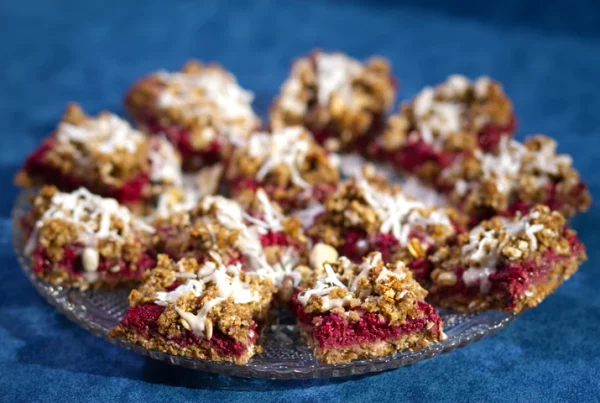Submitted by Kim Campbell, director of culinary education.
The first step toward building a plant-based kitchen is cleaning out the pantry and refrigerator. I recommend you toss or donate (local food banks will take unopened items) all of those food items that are not healthy or considered plant-based. To figure out what stays and what goes, you must understand a food label. Here are my tips for deciding if a product is worthy of remaining on your shelves.
Decoding Food Labels
-
Begin by reading the ingredients. Don’t believe what is on the front of the food label. The front of a package is nothing more than a clever advertisement.

- Ingredients
- Ingredients are listed in descending order by weight.
- Avoid all oils. Common ones include butter, cocoa butter, coconut oil, lard, palm oil, milk solids shortening, hydrogenated fat and oils, partially hydrogenated fats and oils, monoglycerides, diglycerides, and lecithin.
- Avoid products that have sugar in the first three to five ingredients and those that contain multiple sugars. Common sugars: high fructose corn syrup, cane juice extract, evaporated cane juice, dextrose, fructose, galactose, glucose, maltose, sucrose, honey lactose, liquid sugar, molasses
- Avoid all dairy products: casein, whey lactose, milk solids
- Grains should be whole grains; look for the word “whole” in front of the ingredient. Avoid the following terms: wheat flour, enriched wheat flour, white flour, fortified, enriched, or unbleached wheat flour.
- Ingredient lists should be short and simple. Less is more.

- Nutrition facts
- Serving size: Make sure the serving size is reasonable.
- Fat calories: To find a percentage of fat calories, divide the fat calories by the total calories to get a percent of calories from fat. Do not exceed 15%–20% of calories from fat.
- Sodium: Look for a 1:1 ratio of sodium to calories. If the calories are 100, the sodium amount (in milligrams) should be very close to that number.
In next week’s post, we’ll go over a list of items every new plant-based cook should have in her pantry and freezer.

